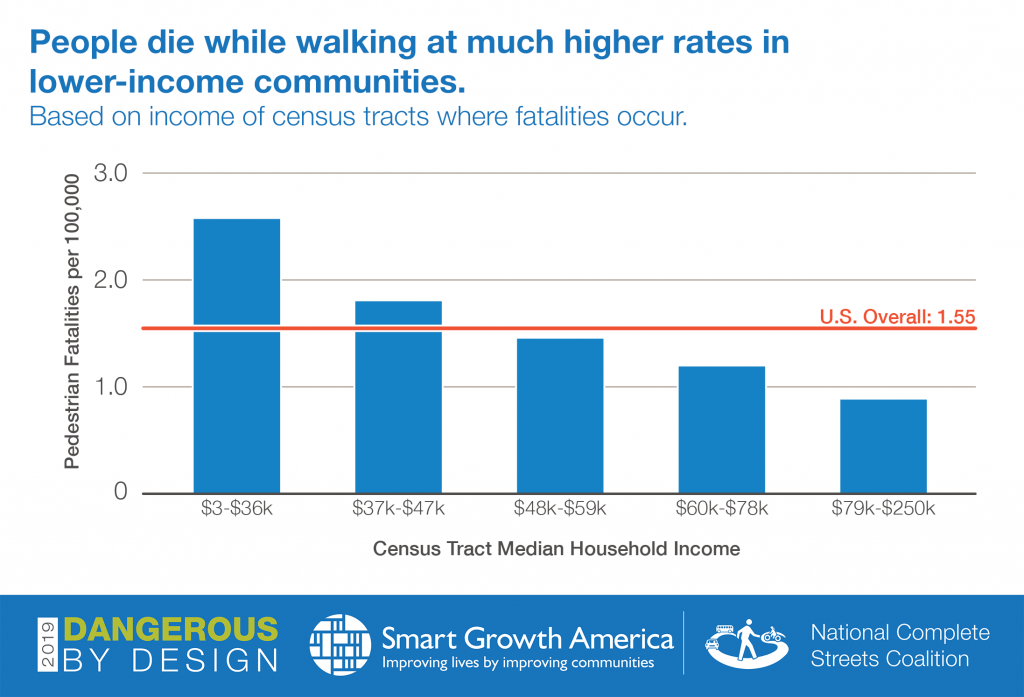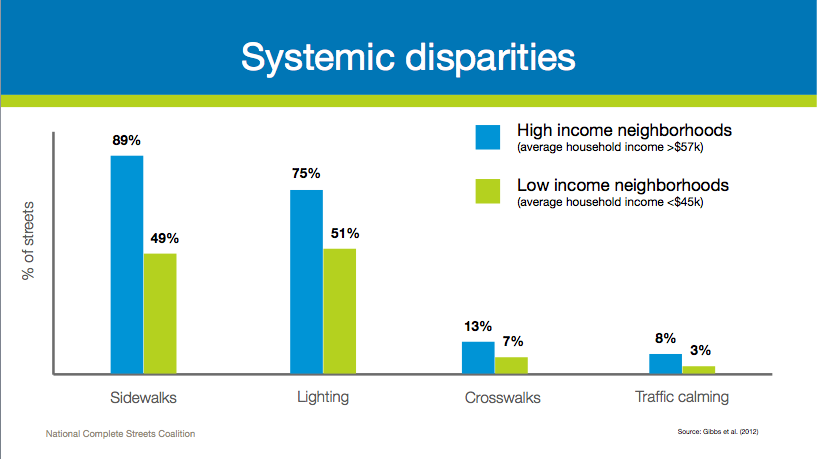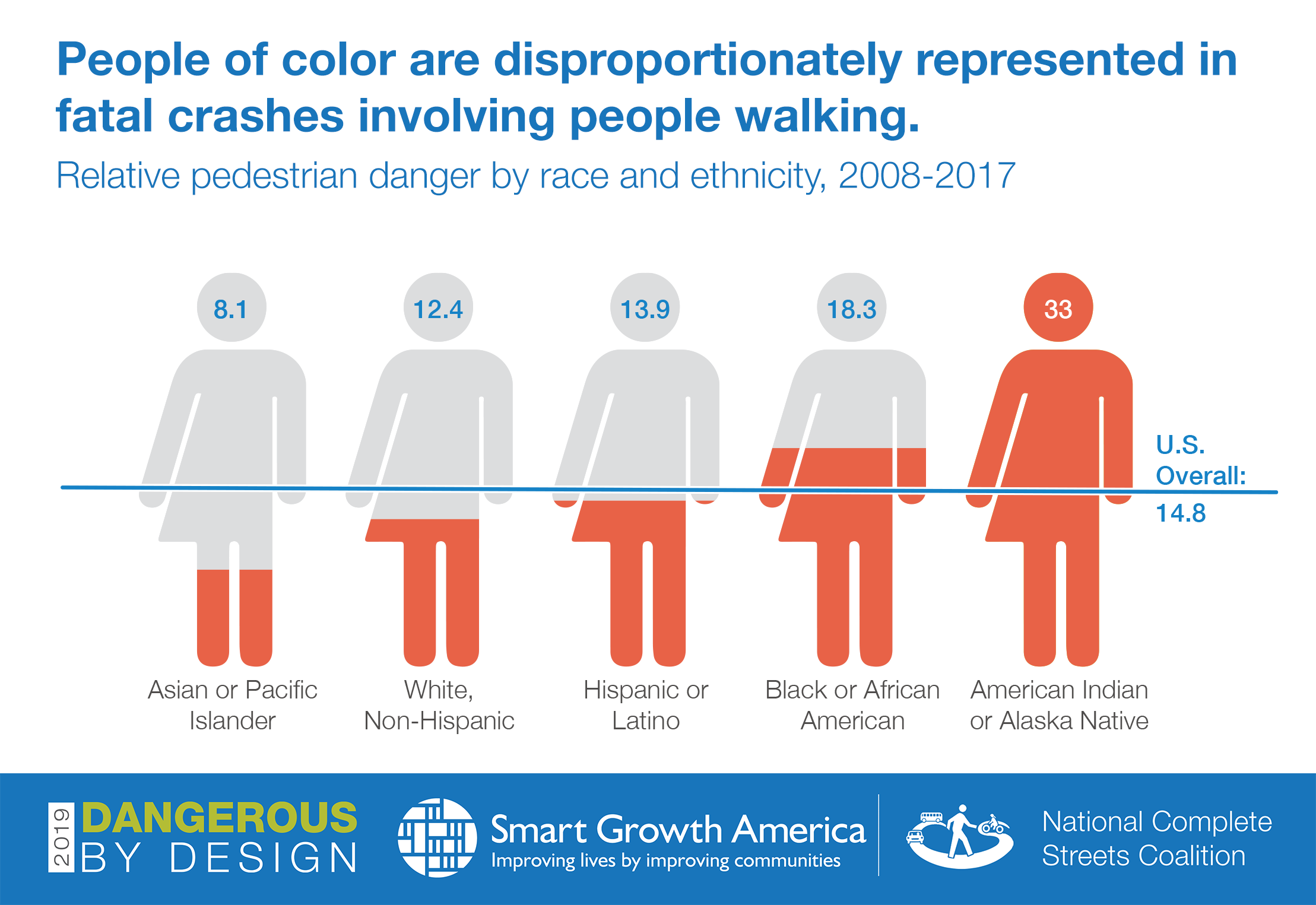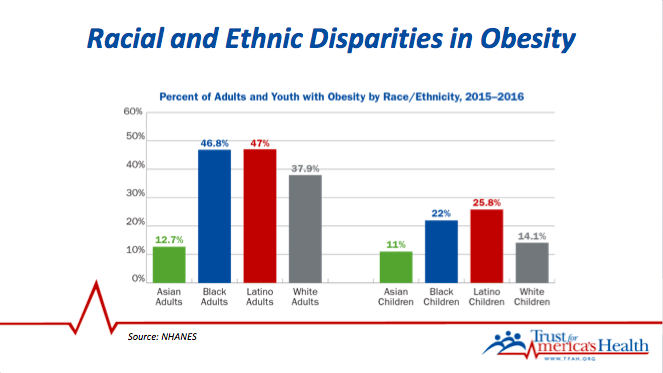
News
By Natasha Riveron, December 16, 2019
This December, we continued our webinar series, Complete Streets 301: Putting people first, with a “Complete Streets for Healthy Living.” We welcomed Trust for America’s Health to talk about their new report, State of Obesity 2019, and how active transportation policy at the federal and state levels can improve the health of all Americans. A recording of the webinar with closed captioning is now available. You can also download a PDF of the presentation or read the brief recap below.
A discussion recap
Emily Schweninger, Deputy Director of Thriving Communities at Smart Growth America, kicked off the webinar by sharing the multifaceted public health benefits of Complete Streets and the different ways that we can measure them.
She also outlined how places that are safe for walking, biking, and rolling provide opportunities for daily physical activity and improved health outcomes. Unfortunately, there are not every neighborhood has safe infrastructure that encourages everyday physical activity. As we outlined in Dangerous by Design 2019, people die while walking at much higher rates in lower-income communities. The same inequities that contribute to those deaths also affect obesity rates, which Trust for America’s Health highlighted in their State of Obesity report.




Next, Daphne Delgado, Senior Government Relations Manager at Trust for America’s Health discussed the overall relationship between chronic disease and physical activity. Among the shocking statistics: about one in three Americans of all ages—more than 100 million people—have obesity, and the numbers continue to grow.
"In 2000, WV was the MOST obese state with an adult obesity rate of 23.9%. In 2018, Colorado was the LEAST obese state with a rate of 23%. In just 18 years, the ceiling has become the floor" Daphne Delgado, MPH from @HealthyAmerica1 pic.twitter.com/0SPKiPmDNb
— Complete Streets (@completestreets) December 5, 2019
She explained the social determinants of health, highlighting how geographic, racial, ethnic, educational, income, and other inequities can contribute to poor health outcomes. This understanding, she notes, is essential for figuring out how to best focus strategies and efforts to help all children maintain a healthy weight and all adults to be as healthy as they can be. Delgado closed her portion of the presentation by highlighting a list of federal initiatives that have an overlap between transportation and health, such as the CDC’s Active People Healthy Nation initiative.
#CompleteStreets are a useful upstream strategy to head-off the need for expensive individual-level interventions later. Thanks @HealthyAmerica1 for explaining this important concept! pic.twitter.com/xIPR4eFMVr
— Complete Streets (@completestreets) December 5, 2019
Adam Lustig, Manager of Promoting Health and Cost Control in States at Trust for America’s Health, then shared concrete examples of how active transportation and active living policy can improve health and/or reduce costs. He emphasized that a system-level, multi-sector approach proves to be far more successful than one-off interventions.
If we want people to move more every day, we need to provide safe places to do that. That's where #CompleteStreets come in. @HealthyAmerica1 pic.twitter.com/pBQtQlAOda
— Complete Streets (@completestreets) December 5, 2019
You can join us and our special guests each month for a new topic related to creating streets and places that put people first. Our next webinar will be Equitable Complete Streets principles in Safe Routes to School on Thursday, January 30 at 1 p.m. ET. Register here.
Related News

© 2026 Smart Growth America. All rights reserved
Site By3Lane Marketing








